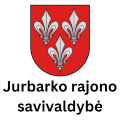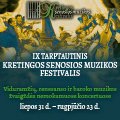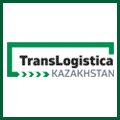Date: 04-06.03.2014
Place: Gdansk, Poland
Website: www.transportweek.eu
Changes, challenges and opportunities – summary of Transport Week 2014
The 4th edition of Transport Week, one of the most important transport events in Central and Eastern Europe, took place from 4th till 6th of March 2014 in Gdańsk. Each year the event gathers hundreds of transport & logistics representatives. In 2014, three major conferences as well as five accompanying meetings focused on the current situation of the transport market, upcoming changes, possible solutions to meet challenges, along with future plans and strategies to grasp opportunities.
“Welcome to my city!” said Paweł Adamowicz, Mayor of Gdańsk, who gave an official speech and opened the conference. It is not a sheer coincidence that Transport Week was once again hosted by the Hanseatic City of Gdańsk. Growing volumes across the Tri-City make the Gdańsk port an important logistics hub in the Baltic Sea region.
30 million tonnes and more…
In 2013 the Port of Gdańsk noted a new record. For the first time in its history Gdańsk’s freight handlings hit the threshold of 30 mln tn – liquids, general cargo and coal accounting for the largest share. At the same time, the Deepwater Container Terminal Gdańsk broke the barrier of 1 mln TEU, placing Gdańsk as the second biggest box port on the Baltic.
New investments are likely to boost the development of Gdańsk, including the 2.5 mln TEU expansion of DCT Gdańsk, continued extension of Goodman’s Pomeranian Logistics Centre and a brand-new tunnel under the port channel.
The Sulphur Directive and its consequences
The Clean Shipping Conference focused on the Sulphur Directive which will come into force as from 1st January, 2015. The new rules impose stricter limits (0.1%) of sulphur content in marine fuel in the so-called Sulphur Emission Control Areas (SECA). The new law will most probably impact shipowners and terminal operators.
In his opening speech Patrick Verhoeven, Secretary General of ECSA, pointed out that financial assistance from the side of the European Commission will be a very important issue here. In addition, Verhoeven underlined the importance of making an environmentally-friendly choice.
Moreover, Magda Kopczyńska, Head of Maritime Transport and Logistics of the European Commission, identified the EU toolbox as something which will support the industry. In this regard, she emphasized the role of funding, which will come from a pool of money dedicated to the TEN-T (transferred to both port infrastructure, and technical solutions to be used on vessels), as well as the European Sustainable Shipping Forum (ESSF).
Up-to-date, there are three ways to cope with the Sulphur Directive – switching to low sulphur fuel, using alternative fuels such as Liquefied Natural Gas or methanol, or installing scrubbers. All of them have their pros and cons, which were analysed during the conference.
It is worth to mention that each of the EU Member States should establish rules and procedures regarding verification of compliance with the new sulphur regulations as well as its own system of penalties. The European Commission will only propose a standardized method of monitoring for all countries.
TEN-T – an opportunity for the transport development
The TEN-T concept, marking out nine major transport corridors crosscutting the whole of European Union, was another important issue tackled during Transport Week 2014. The role of ports, funding opportunities and the future of shipping were presented by Paweł Stelmaszczyk, coordinator for the implementation of the TEN-T policy in Central and Eastern Europe. The development prospects of projects under the TEN-T include plans for the year 2020 and will be supplemented with a new financial instrument (altogether EUR 26 bln). Thanks to this policy the intermodal transportation system in Europe will have the chance to develop faster.
Container industry still on top
Containers are a must-have during such an event, therefore Transport Week’s 2nd Day was wholly devoted to this segment of the transport market. Ingrid Uppelschoten-Snelderwaard, Managing Director of Maersk Line Poland, showcased the world’s largest container vessels – Maersk’s Triple-Es – which call at three Baltic ports and elaborated on their impact on the container market. “The gradual replacement of the fleet and building cost-effectiveness of using new, more efficient units is part of our long-term strategy. We believe that the search for the optimum, ecological and efficient solutions raises the standards in our industry, while ensuring the ratio of supply to market demand,” Ingrid Uppelschoten-Snelderwaard commented.
Another important topic of the second day, raising a lot of conflicting emotions, was the forming of the P3 Network of three largest container carriers (Maersk Line, MSC, CMA CGM). “Entry into force of the alliance P3, now depend on the consent of regulatory institutions, to ensure stability and frequency of deliveries to customers and will allow even more organized vessels with a capacity of 18,000 TEU,” Ingrid Uppelschoten-Snelderwaard summed.
The impact of the P3 Network on the container-industry was presented by Steve Wray, the representative of Ocean Shipping Consultants. According to him, the group P3 will lead to strengthening the cooperation between other shipowners in order to compete with the “Big Three”. According to Steve Wray, there will be winners & losers of the new grand alliance. For instance the ports in Antwerp and Wilhelmshaven (JadeWeser) will benefit from P3 thanks to a larger number of direct calls, while Rotterdam or Port Klang will see their network losing a few direct connections. Steve Wray emphasized that also terminals need to become more and more efficient in order to attract shipping companies with the most favourable and attractive services.
Intermodal – the efficiency of service providers
“Big is beautiful!” said Jeroen Kats, representative of the company TBA, during his keynote speech at the 3rd day of the event. In his presentation Kats pointed out that the increasing capacity of cargo vessels forces terminals to expand as well as introduce innovative ideas.
During the second part of the Intermodal Conference speakers presented solutions implemented across the seaports of Verona, HaminaKotka, Koper, Hamburg and Romanian inland ports. They agreed in unison that in order to improve intermodal – as an overall transport & logistics offer – it is a necessity to cut down freight handling time and to constantly improve infrastructure. In this regard a swift cooperation between ports and carriers also contributes to a win-win situation.
Additionally, ICT tools are another significant way of improving & developing intermodal transportation. Leszek Andrzejewski, representative of the Poznań-based Institute of Logistics and Warehousing, presented a web-based platform (as part of the TransBaltic Extension project) that integrates different information processes. Such streamlining makes it possible to better manage and supervise the movement of cargo. The tool can further reduce terminal costs, optimize supply chain management as well as increase the transparency of transport processes.
Meetings, seminars, panels
Within the Transport Week 2014 there were three additional meetings organized by the Baltic Ports Organization (BPO), a conference on boosting investments in Pomerania and on cooperation between Tri-City ports prepared by the Invest in Pomerania. The last day hosted the Offshore Wind Energy – Logistic Supplies Conference, organized by the Polish Offshore Wind Energy Society. Last but not least, at the end of the event’s second day, participants met in the beautiful and historic Artus Court during the Cocktail Evening, where the Baltic Transport Journal team presented for the third time the Baltic Trendsetters Club Certificates to parties who change the Baltic Sea region’s transport market with exceptional boldness, persistence and creativity.
Transport Week 2014 is 4th edition of international event, which is the biggest platform of communication in Poland created for key European transport market representatives. It will be held in the Polish Baltic Philharmonic in Gdansk on 4-6th March 2014. This edition consists of several conferences among others: Green Shipping Conference, Baltic Container Conference, Intermodal Conference and Offshore Wind – Logistic & Supplies Conference, accompanied by exhibition. Forthcoming edition will bring many addresses, meetings, panels together with questions and solutions in many topics, such as: Shipping in SECA after 1 January 2015 – how to prepare for the big change? , new big ships arrival – new strategies and consequences for terminals, P3 – optimizing container in fleet, reaction of competitors, New TEN-T Policy – Network Concept and Financing and Connecting Europe - Asia by sea or rail?




.jpg)






